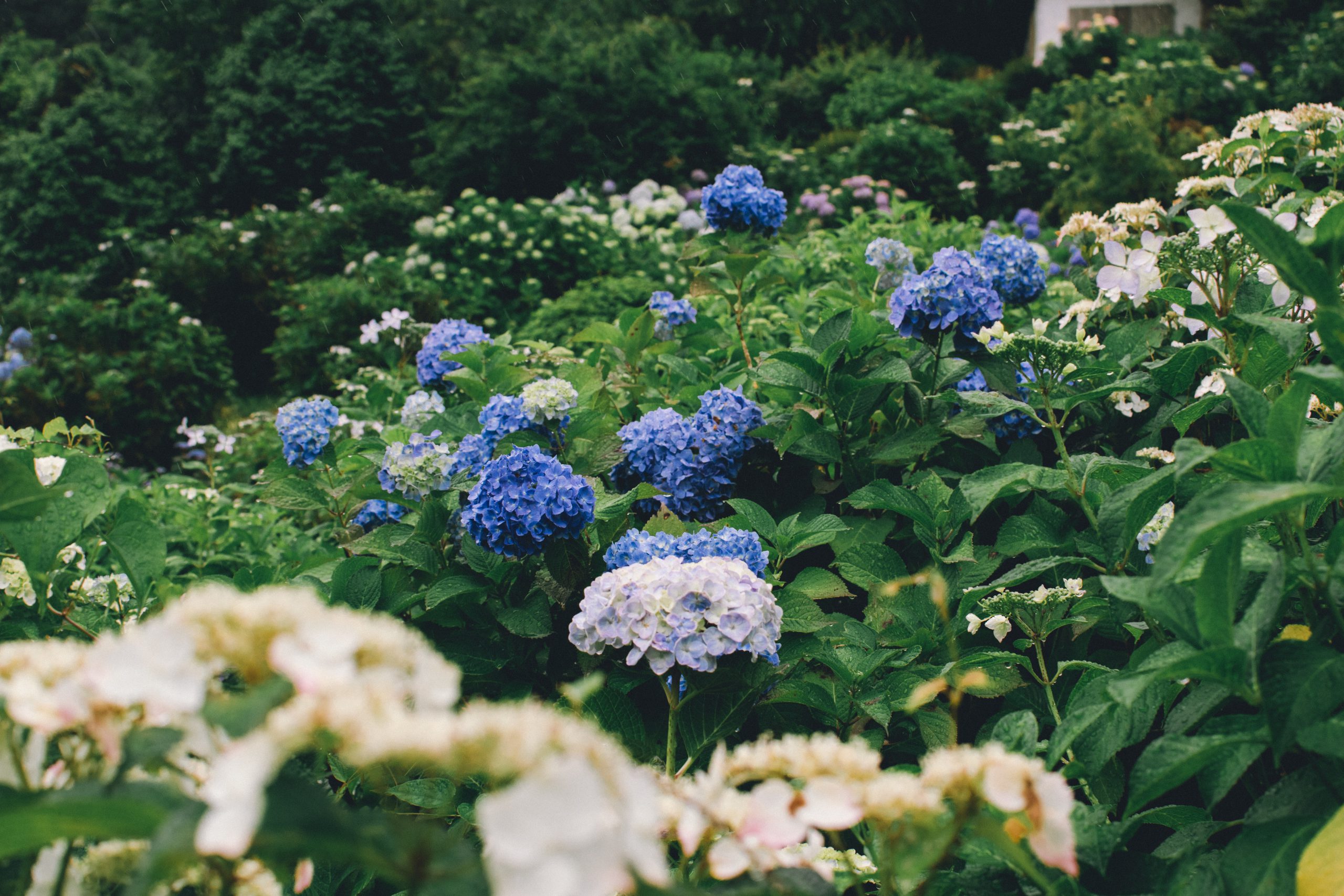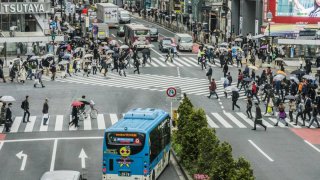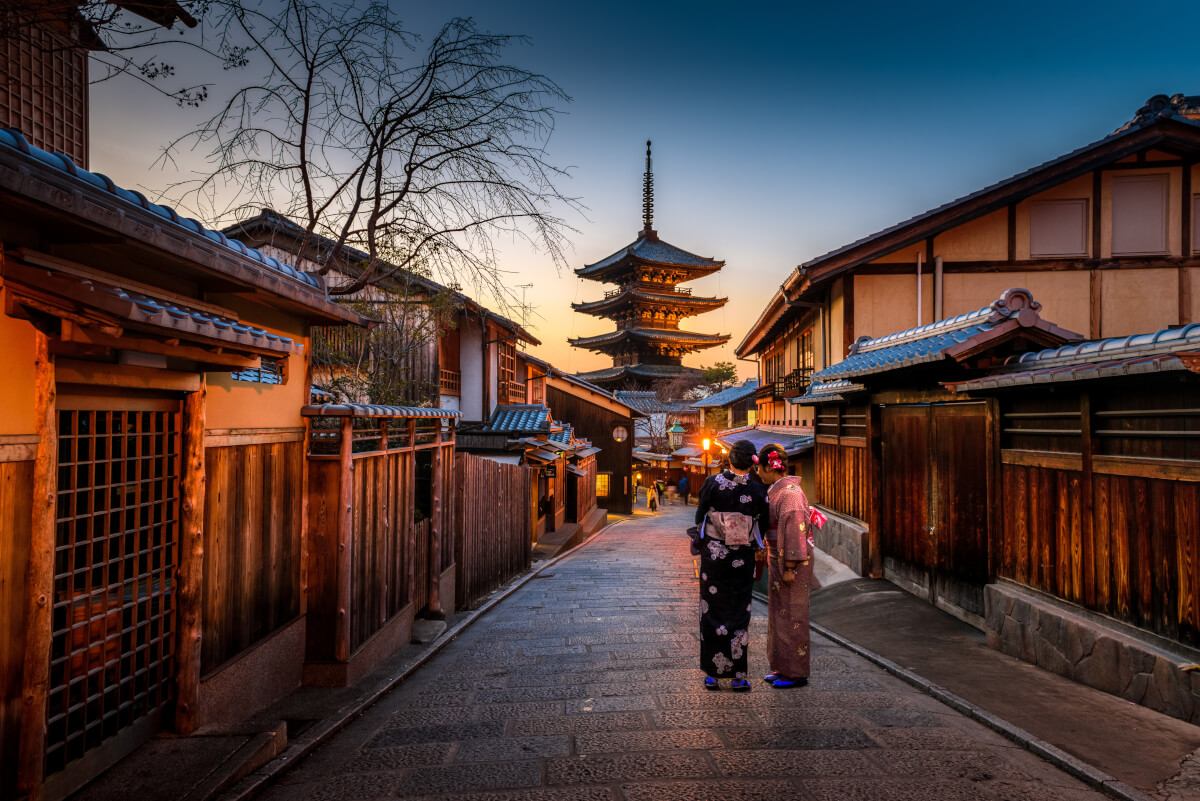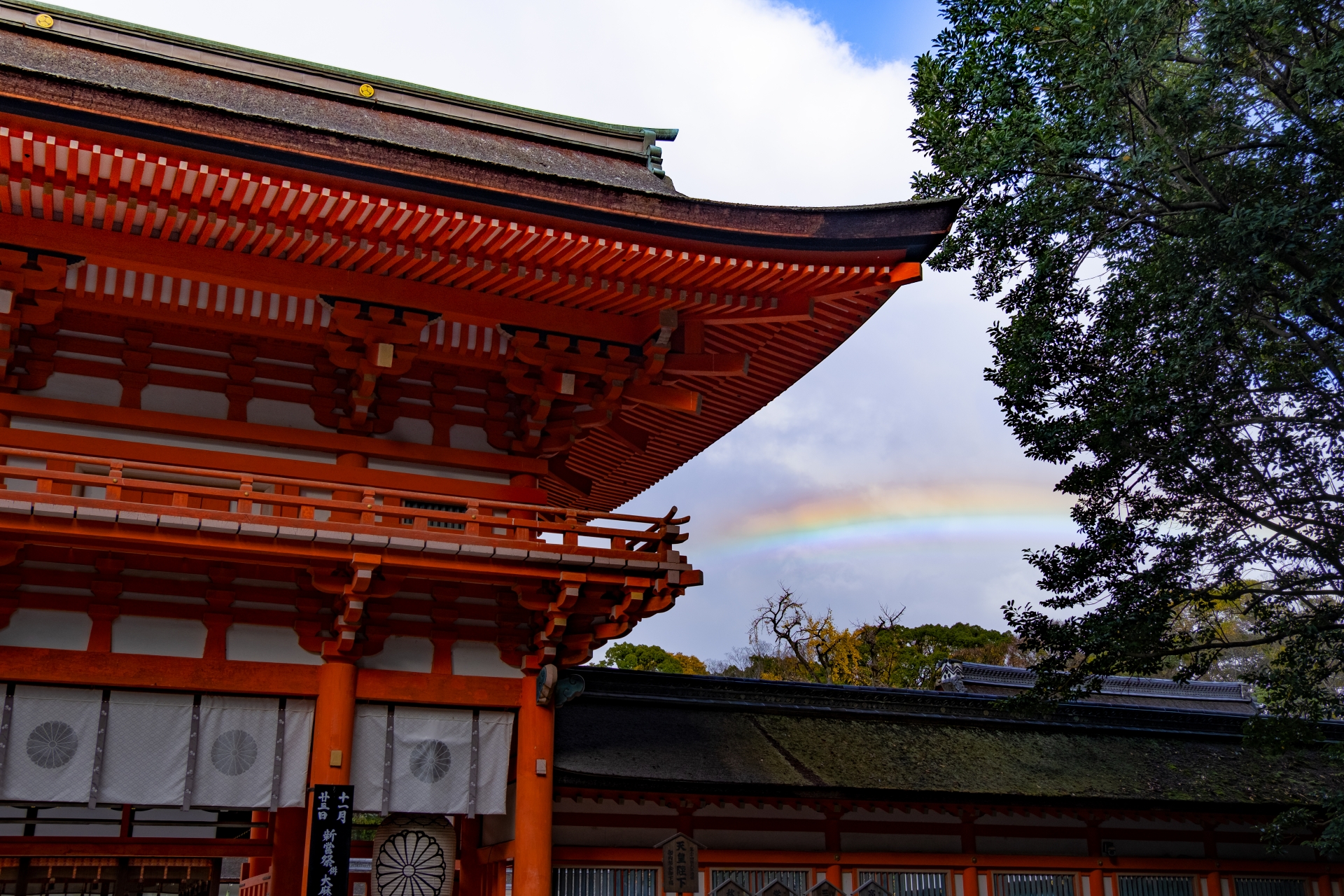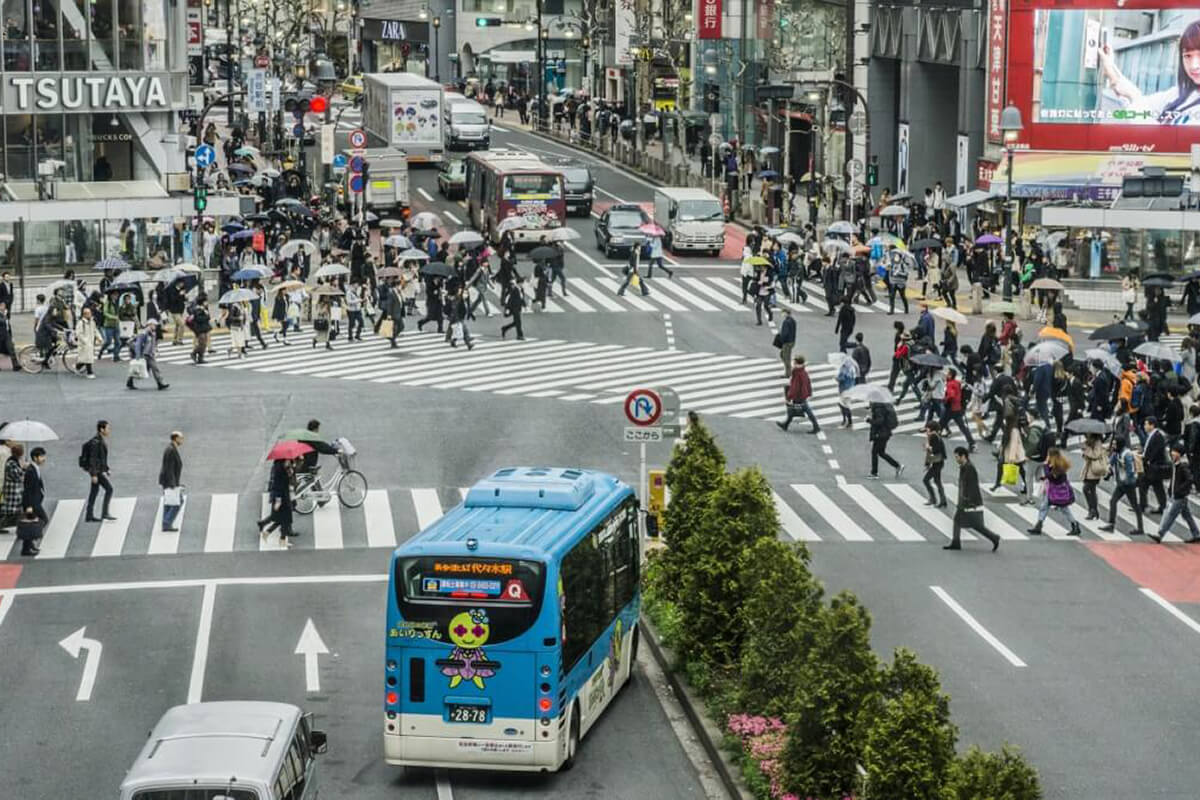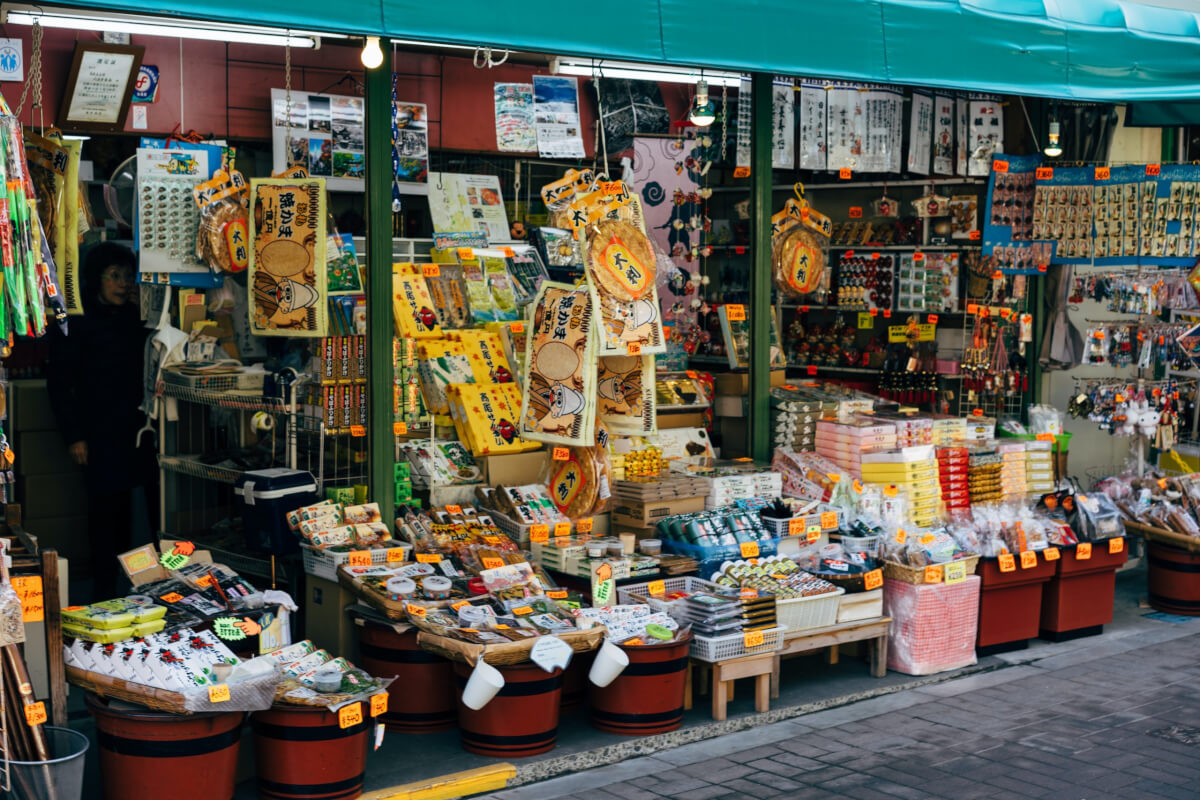This post may contain some affiliate links. When you click through and make a purchase we may receive some commission, at no extra costs to you.
Ok, nobody dreams of coming to Japan during rainy season, or tsuyu as it’s known to the locals. From June to early July, Japan is in rainy season, but that doesn’t mean it’s a bad time to visit! Airfares may be cheaper, people may be on summer holidays, and all in all it may be the only time you can make the trip. It could also be a random rainy day any time of year so it’s best to be prepared for the possibility! But don’t worry, the rain doesn’t have to get you down. And when it comes to somewhere as popular as Kyoto, think of it as a secret invitation to discover a whole other (and quieter!) side of the city, one filled with warm cups of matcha, hidden temple corners, and the soothing sound of raindrops on ancient roofs.
Looking for the best places to go in Kyoto on a rainy day? Keep reading because we’re diving headfirst into 30 brilliant indoor activities that’ll make you fall in love with Kyoto, rain or shine!
▶Get the most out of your time in Kyoto with our guided private tour here
- Museums
- 1. Gekkeikan Okura Sake Museum
- 2. Kyoto Railway Museum
- 3. Nishijin Textile Center
- 4. Kyoto Kaleidoscope Museum
- 5. Furuta Oribe Museum
- 6. Kyoto Cultural Museum
- 7. Kyoto Museum of Crafts and Design
- 8. Hosomi Museum
- 9. Kyoto International Manga Museum
- 10. Kyoto City KYOCERA Museum of Art
- 11. The National Museum of Modern Art, Kyoto
- 12. Kahitsukan Kyoto Museum of Comtemporary Art
- 13. Kyoto National Museum
- Temples and other Historical Sites
- Onsen (Hot Springs) in Kyoto
- Cultural Experiences and Workshops
- Theater
- Shopping
- Other Spots to Enjoy on A Rainy Day
- Recommend Rainy Day Activity
- Japan Wonder Travel Tours in Kyoto
- Other articles you might like
Museums
Since Kyoto used to be the capital city for 1,000 years and is a historical cities in Japan, there are lots of important museums to visit. And there’s no other perfect time to visit a museum than on a rainy day!
1. Gekkeikan Okura Sake Museum
If you like Japanese Sake, the Gekkeikan Okura Sake Museum is worth a visit. This museum is in Fushimi ward which is a famous place for high-quality sake in Japan. In this museum, you can learn the history, culture, and the process of making sake. You can also indulge in three different sake tastings at the end of the tour.
Website: Gekkeikan Okura Sake Museum
Admission fee: 600 yen (Over 20 years old), 100 yen (13-19 years old), free (children)
*Over 20 years old will get the sake tasting, and over 13 years old will get small gifts
2. Kyoto Railway Museum
The Kyoto Railway Museum is the biggest train museum in Japan. Its large collection allows visitors to learn the culture and history of railway innovation, while checking out some cool trains up close and personal. It has 53 different real train cars at the exhibition to learn the history and how they worked. Visitors can even enjoy train simulators and a real steam train ride for a memorable experience.
Website: Kyoto Railway Museum
Admission fee: 1,500 yen (adults) 1,300 yen (university and high school students), 500 yen (elementary and junior high school students), 200 yen (children)
3. Nishijin Textile Center
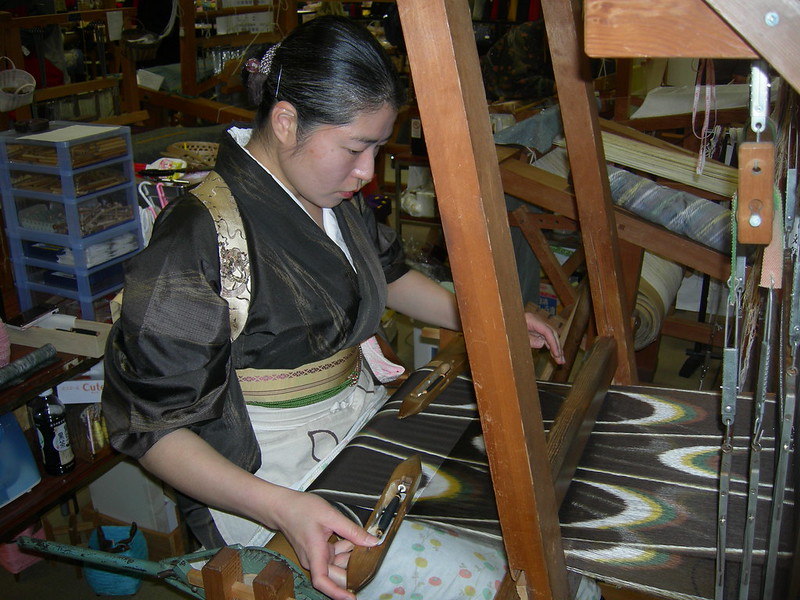
Nishijin is a traditional textile produced in Nishijin in Kyoto and the Nishijin Textile Center is a great place to learn about Nishijin textile and its history. Every day they host a Kimono show that introduces Japanese traditional fashion, and they have a handwoven workshop, kimono wearing experience and exhibition.
Website: Nishijin Textile Center
Also, if you want to have the chance to wear your own kimono during your time in Japan, we recommend checking out a rental kimono. This is usually ta great way to experience this traditional attire. Plus, you can leave your luggage or other bags at the store so you can enjoy your kimono hands-free. Check it out below!
4. Kyoto Kaleidoscope Museum
The Kyoto Kaleidoscope Museum is a small museum showcasing about 50 kaleidoscopes from around 300 different collections from all over the world. This is a great opportunity to try them out, too! The collection will be beyond your imagination, with many kaleidoscopes that don’t look like what you would expect, such as the one that looks like a Maiko doll.
Website: Kyoto Kadeidoscope Museum
Admission fee: 500 yen (adults), 300 yen (seniors), 300 yen (high school students), 200 yen (elementary and junior high school students)
5. Furuta Oribe Museum
Furuta Oribe was a master of tea ceremony in the late 16th century, and the Furuta Oribe Museum is a small museum which displays his tea ceremony tools and calligraphy works. The exhibition changes twice a year.
Website: Furuta Oribe Museum
Admission fee: 500 yen (adults), 400 yen (high school and university students), 300 yen (junior high school students and under)
6. Kyoto Cultural Museum

The Kyoto Cultural Museum opened in 1988 as the museum to introduce Kyoto’s history and culture. It features more than exhibitions, you can also enjoy shopping on the first floor which recreates the townscape of Kyoto during the Edo period. Another attraction is the western inspired building next to the main building. This used to be the Kyoto branch of the Bank of Japan, and is now used as a music and special exhibition hall. The third floor is home to a small theater where old Japanese films are played.
Website: Kyoto Cultural Museum
Admission fee: 500 yen (adults), 400 yen (college/university students), free (high school students and under)
7. Kyoto Museum of Crafts and Design
Originally opened in 1977 and reopened in 2020, the Kyoto Museum of Crafts and Design exhibits the world of crafts made by Kyoto’s professional craftsmen. The permanent exhibition displays art with electric panels for description and videos of the process that was involved in making the pieces. Craft demonstrations performed by skillful craftsmen and the special exhibitions are also stand out reasons to visit the museum.
Website: Kyoto Museum of Crafts and Design
Admission fee: free (except some special exhibitions)
8. Hosomi Museum
The Hosomi Museum opened in 1998 based on the Hosomi family’s large collection and inspired by traditional Kyoto machiya houses. The collections are focused on Japanese arts from various periods, like the Jomon period (14,000-300 BCE) to the Edo period. There is a tea room, museum shop and cafe at the museum as well. If you’re a fan of classic Japanese architecture, this is a hidden gem you really shouldn’t miss.
Website: Hosomi Museum
Admission fee: varies depending on the exhibition
9. Kyoto International Manga Museum
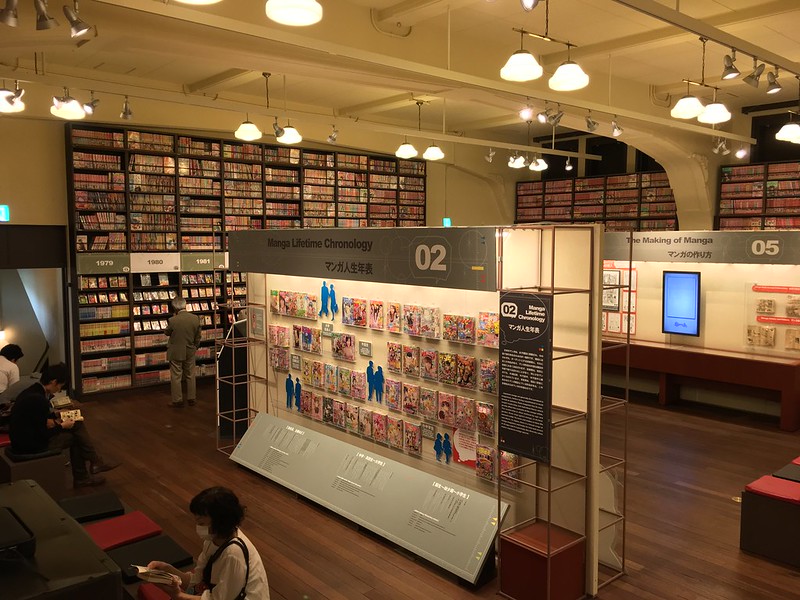
Manga is the Japanese word for comic book or graphic novel, and the Kyoto International Manga Museum has over 300,000 manga books from all over the world! It’s a super place for manga lovers, there are huge bookshelves overflowing with books, and you can read them and learn about manga culture to your heart’s content. The museum building was renovated from an old elementary school, which adds a more interesting element to the museum. Don’t miss the special exhibitions which will be held 2-3 times a year.
Website: Kyoto International Manga Museum
Admission fee: 1,200 yen (adults), 400 yen (junior and high school students), 200 yen (elementary school students)
10. Kyoto City KYOCERA Museum of Art
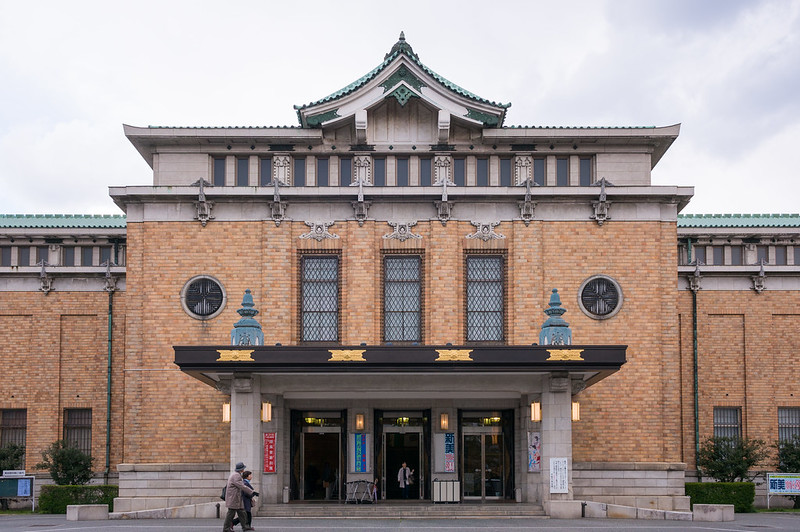
Kyoto City KYOCERA Museum of Art is known for its beautiful architecture and Japanese garden. Since its opening in 1933, it’s been loved by locals and it reopened in 2020 with the mixture of historical and modern taste. While special exhibitions feature various artworks from the world, Collection Room features Japanese arts from Kyoto where the exhibition changes every season.
Website: Kyoto City KYOCERA Museum of Art
Admission fee: 730 yen (adults/other city’s residents), 520 yen (adults/Kyoto residents), 300 yen (students/other city’s residents), free (students/Kyoto residents and children)
11. The National Museum of Modern Art, Kyoto
The National Museum of Modern Art, Kyoto is located in Okazaki Park, and hosts about 12,000 collections from in and outside of Japan. You can enjoy the large collections of art including paintings, and crafts such as porcelain and textiles.
Website: The National Museum of Modern Art, Kyoto
Admission fee: varies depending on the exhibition
12. Kahitsukan Kyoto Museum of Comtemporary Art
The Kahitsukan Kyoto Museum of Contemporary Art is located in the Gion area near Yasaka Shrine. The collections are based on the philosophy of “always doubting established theory with free of mind”. The main artists are Rosanjin, Murakami Kagaku and Yamaguchi Kaoru, and the collections developed with various artworks from in and outside of Japan.
Website: Kahitsukan Kyoto Museum of Contemporary Art
13. Kyoto National Museum
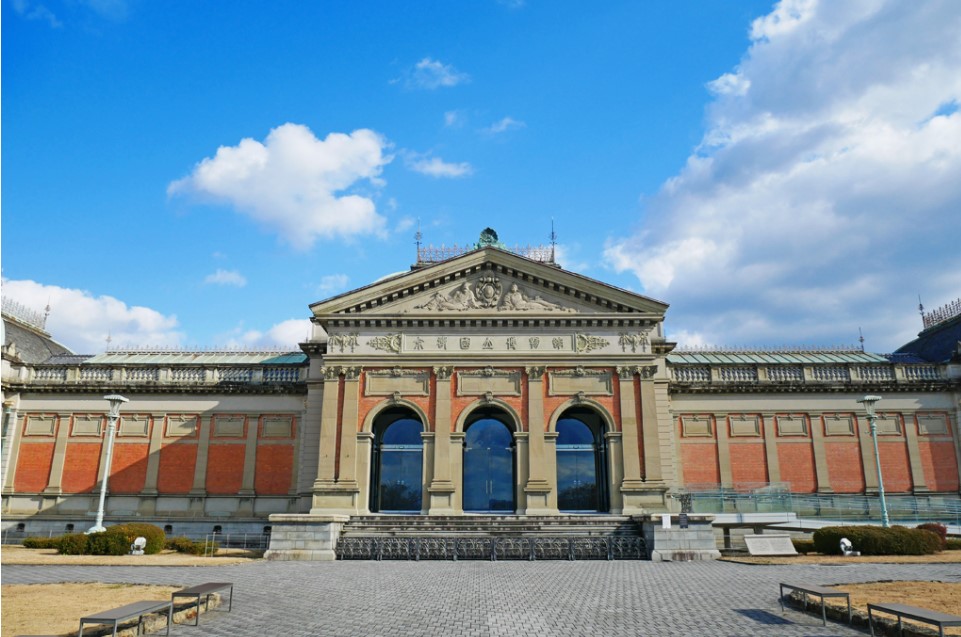
The Kyoto National Museum has over 120 years of history. It is home to Buddha statues, paintings and picture scrolls and so on. You can enjoy the important artworks in Japan. They host special exhibitions occasionally, and during that time, permanent collections will be closed.
Website: Kyoto National Museum
Admission fee: varies depending on the exhibition
Temples and other Historical Sites
There are about 1,700 temples in Kyoto, and some have beautiful gardens where you can enjoy the view from inside. You can spend a relaxing time enjoying the view and feeling the flow of time while hearing falling rain. It doesn’t get much more zen than this!
14. Genko-an
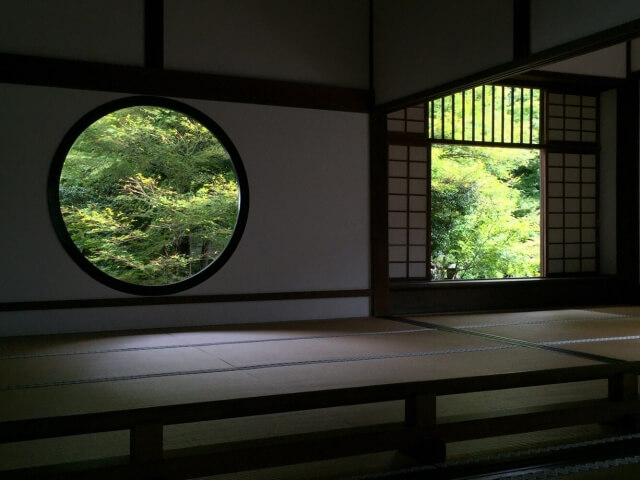
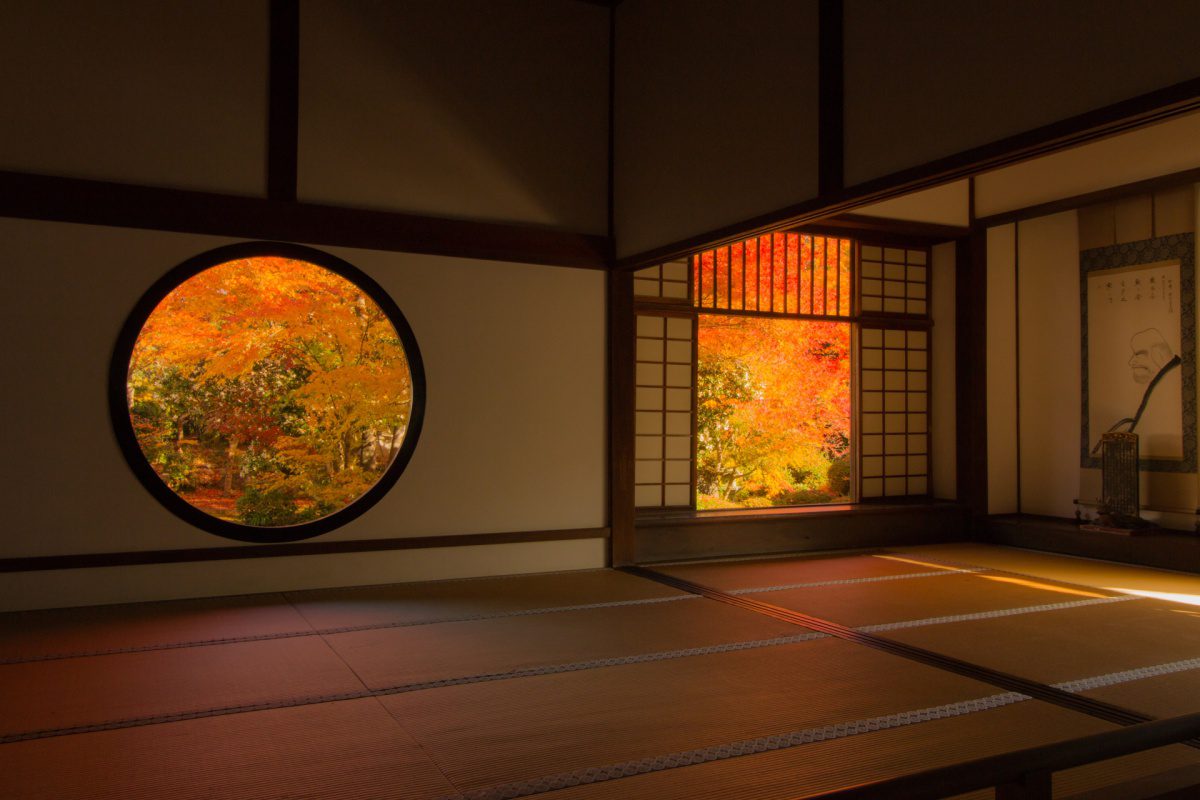
Genko-an is known for its two big windows. One is round and another one is square.
The round window is called “The Window of Enlightenment” and the square one is called “The Window of Confusion”. Since Genko-an is very quiet, it is a good place to meditate and let it go through all the stress you have. The beautiful view of the garden will change each season and it is a popular spot for the autumn foliage!
Website: Genko-an
Admission fee: 400 yen (adults), 200 yen (children)
*In November admission fee is 500 yen (adults)
15. Sanjusangendo Temple (Rengeo-in)
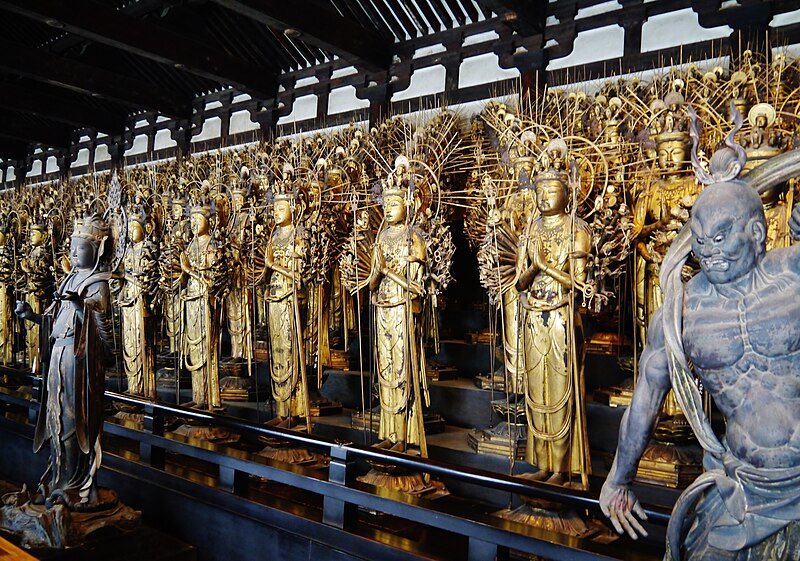
Sanjusangendo is sometimes described as a forest of Buddha Statues. The temple hall is the longest wooden structure in Japan and it’s home to 1,001 wooden statues of Buddha. Every statue was made approximately 1,000 years ago with a wish for a gentle and easy death. Since Sanjusangendo is very close to Kyoto National Museum, visiting those two places is a recommended route for a rainy day.
Website: Sanjusangendo
Admission fee: 600 yen (adults), 400 yen (junior and high school students), 300 yen (children)
16. Kennin-ji Temple
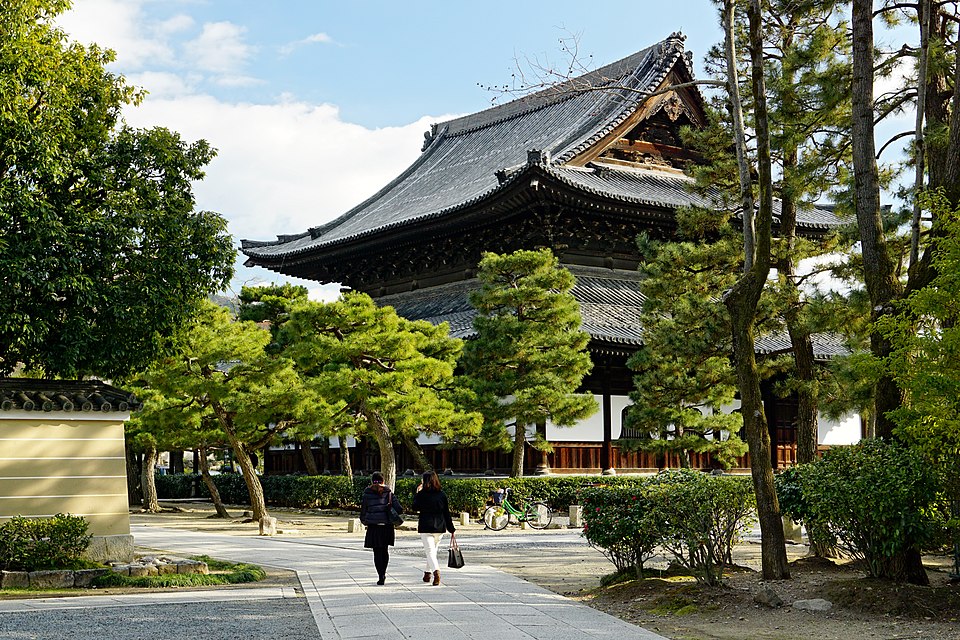
Kennin-ji was built in 1202, one of the oldest zen temples in Japan. Many tourists visit the temple for beautiful fusuma (sliding doors) paintings and byobu (folding screens) paintings. Wind God and Thunder God is a very famous byobu painting that you can see at the temple. It’s the painting by Ogata Korin, and the real one is now part of the collections of Tokyo National Museum and occasionally exhibited, but you can see the replica at this temple.
Website: Kennin-ji
Admission fee: 800 yen (adults), 500 yen (elementary, junior and high school students)
17. Daitoku-ji Temple
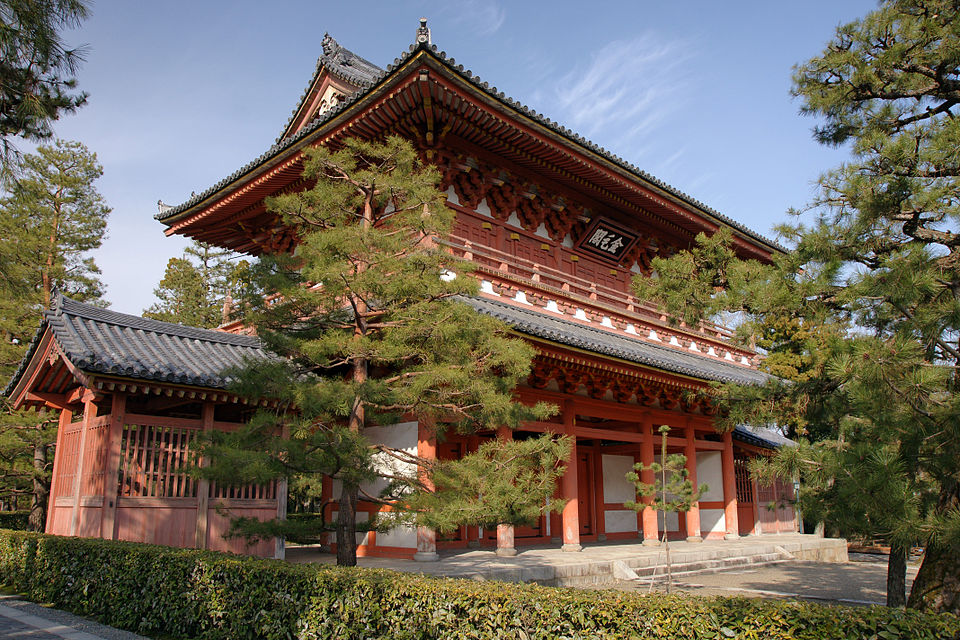
Daitokuji played an important role in the tea ceremony and was associated with the tea master Sen no Rikyu. This temple consists of over 20 sub temples which are mostly closed to the public. It’s a great place to see the beautiful zen gardens especially at Daisen-in, Zuiho-in and Ryugen-in. At Koto-in, walk on the stone path surrounded by bamboo forest to the garden, in the fall you can see the breathtaking autumn foliage as well.
Website: Daitoku-ji Temple
Admission fee: varies
18. Ryoan-ji Temple

Ryoanji’s rock garden is a well-known rock garden in Japan. It was founded in 1450, and when Queen ElizabethⅡvisited the garden in 1975, she praised the garden which has attracted hundreds of visitors every day since. The origin of the garden is still unknown, who and when it was created is a mystery. Around the pond you can also enjoy seasonal flowers at the temple.
Website: Ryoan-ji Temple
Admission fee: 600 yen (adults), 500 yen (high school students), 300 yen (elementary and junior high school students)
19. Eikando Temple
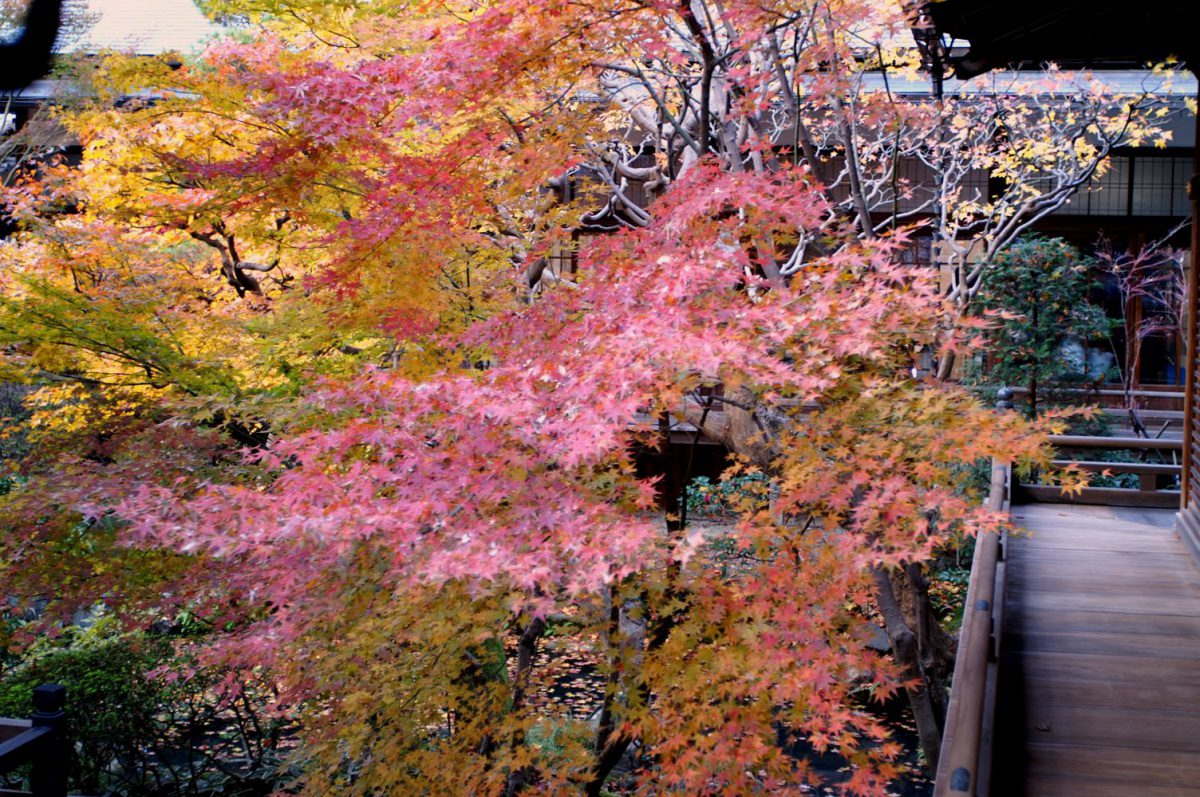
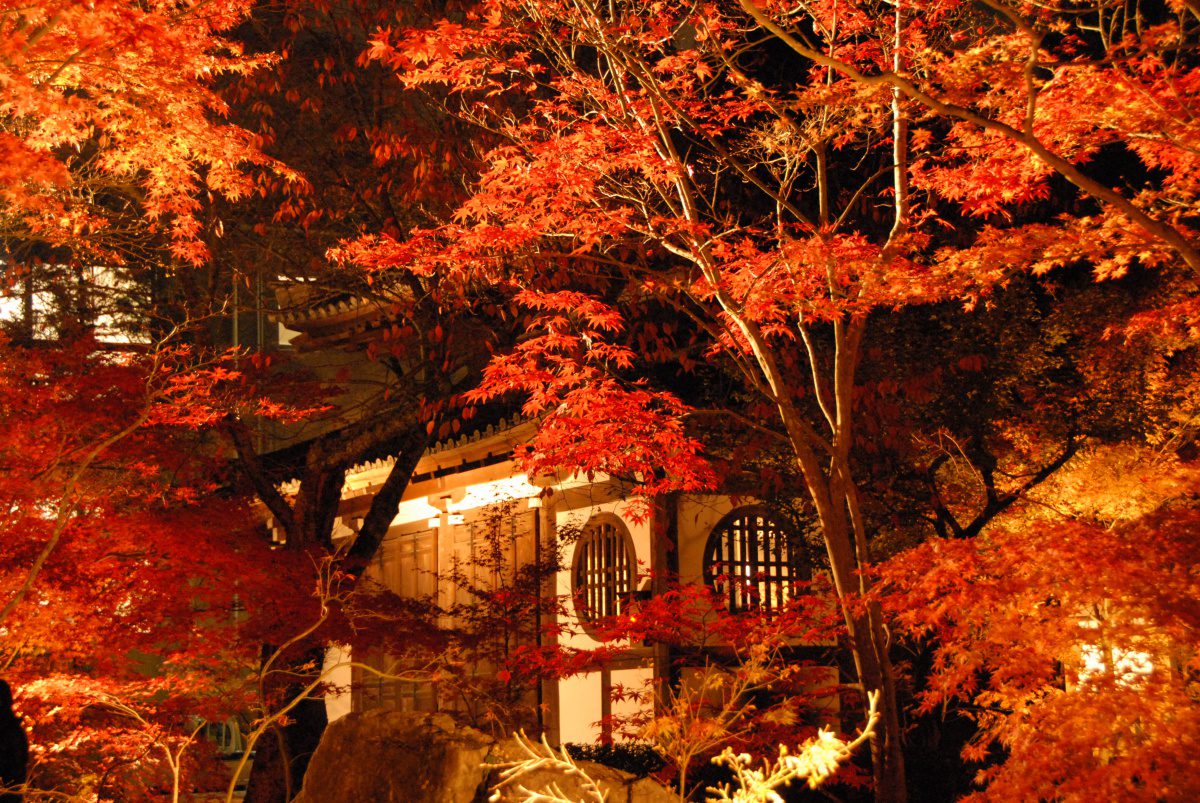
Eikando is located in Higashiyama district and is a very popular spot for autumn foliage. During fall, you can enjoy the autumn color anywhere you look at the site of the temple with about 3,000 maple trees. Buddhist statues and other important treasures are other attractions of the temple.
Website: Eikando
Admission fee: 600 yen (adults), 400 yen (students/children)
*During autumn foliage season, admission fee may change
20. Nanzen-ji Temple
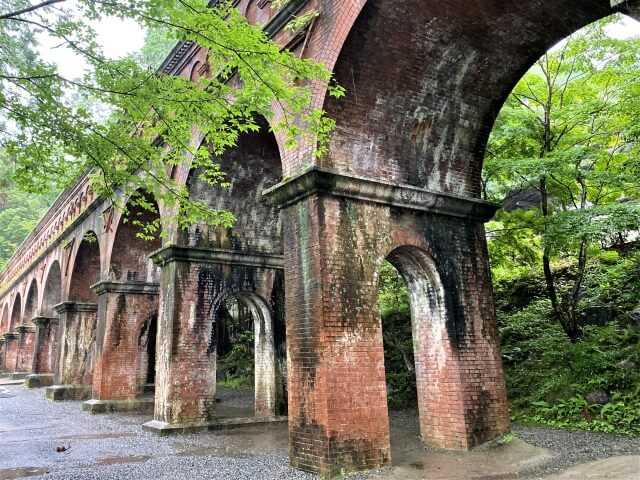
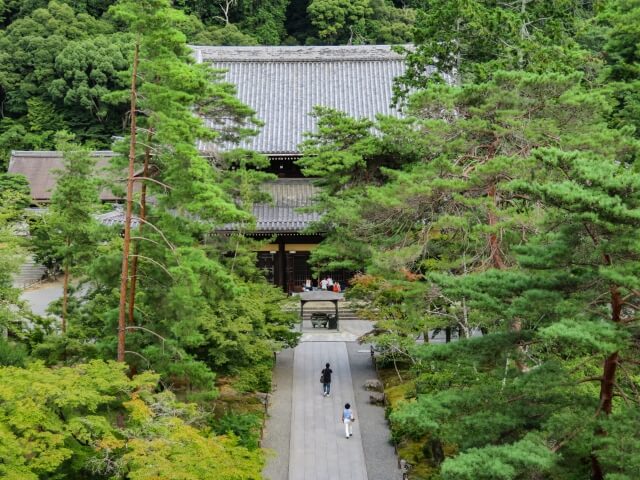
Nanzenji’s Sanmon is one of the tallest gates at the height of 22 meters. Climb up the stairs and you can see stunning views over the mountains and Kyoto City. Another unique spot is the waterway pavilion which was completed in 1888, with its modern and western influenced design adding agreeable charm to the temple site. After visiting Nanzenji, we recommend you to walk on the philosopher’s path to Ginkakuji, which allows you to enjoy a pleasant walk on a stone path even on a rainy day!
Website: Nanzen-ji Temple
Admission fee: Sammon gate – 600 yen (adults), 500 yen (high school students), 400 yen (elementary and junior high school students)
21. Nijo Castle

Nijo-jo is designated as UNESCO World Heritage Sites and fun fact: the castle in the first scene of the movie, ‘Inception,’ was modeled after Nijo Castle! In real life, the castle played a role as a protection for the Imperial Palace and Shogun’s residence in Kyoto. It’s an important castle because this is where the Edo period ended, and when the last Shogun returned its power to the Imperial court. Nijo-jo consists of six connected buildings, including Ninomaru-goten Palace which is the must-see main building. You don’t want to miss checking out the gorgeous rooms and wall paintings where time has stopped since the Edo period.
Website: Nijo Castle
Admission fee: 1,300 yen (adults), 400 yen (junior high school students), 300 yen (elementary school students)
Onsen (Hot Springs) in Kyoto
Take a day trip to Onsen (hot springs) when you want to treat yourself from your long trip to Japan. It is highly recommended because you can get the unique bathing experience of Japan and reduce your fatigue (and sore feet!).
22. Onsens in Kyoto
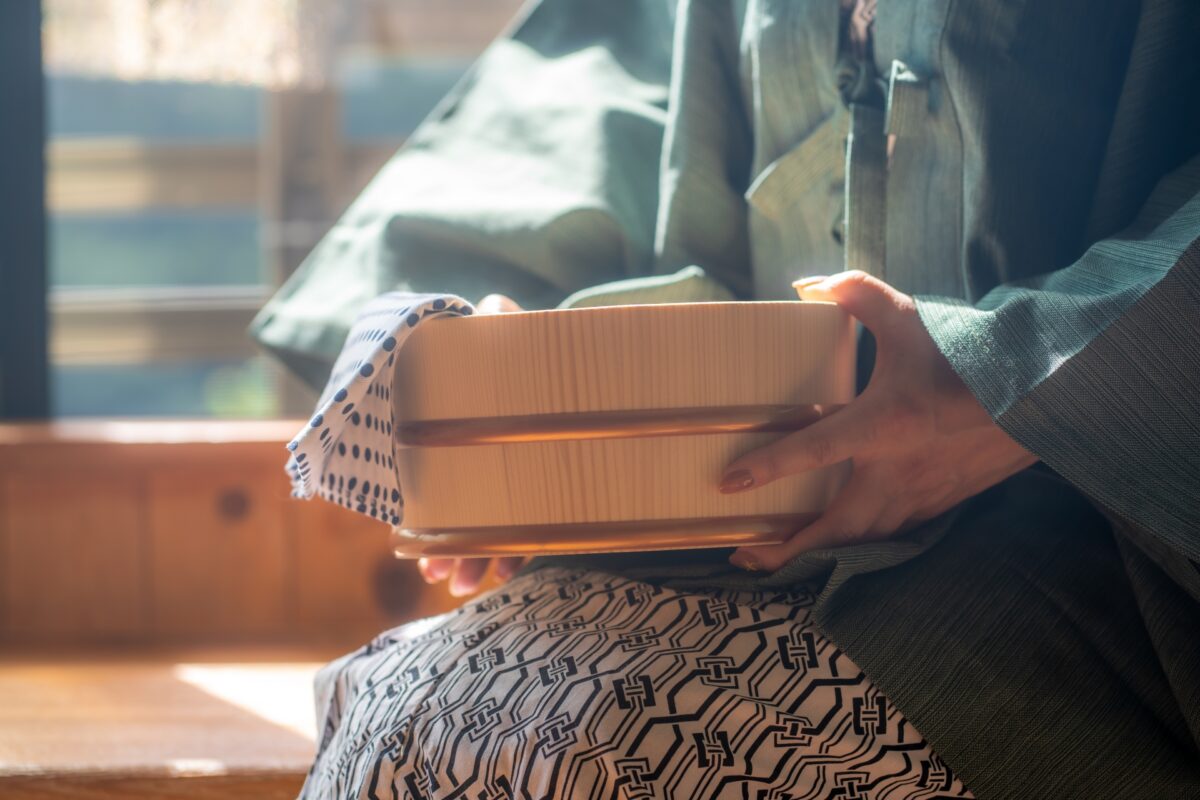
- Nizaemon-no-yu: a full service onsen with open air mineral baths with onsite massages, a hair salon and restaurant.
- Tenzan-no-yu: a huge super-sento complex with baths, a large sauna and occasional manzai comedy routines. There’s also a full restaurant.
- Fufu-no-yu: River views set the scene at this beautiful onsen with indoor and outdoor mineral baths.
- Gyokkoyu Hijirinone: Stunning complex with baths, a restaurant and massage services.
- Mibu Onsen Hana-no-yu: Comfortable and cozy onsen with 12 hot spring baths to choose from.
Cultural Experiences and Workshops
23. Tea Ceremony

There are a lot of places where you can join a tea ceremony and Kyoto is a great place to do so since it originated here. Participating in a tea ceremony is a popular thing to do in Kyoto if you really want to learn more about the Japanese culture. Since tea ceremony is an indoor activity, it is recommended on a rainy day.
24. Wagashi (Japanese Sweets) Making Workshop

If you are interested in making (and eating!) Japanese sweets called wagashi, Kanshundo which is a popular wagashi shop in Kyoto offers workshops for it. You can make a beautiful piece of delicious art which is suited to each season. The workshop is for beginners, so don’t worry if you have no idea how to make Japanese sweets! English, Chinese and Korean texts are available for the workshop.
Website: Kanshundo
Other Wagashi Workshops:
25. Samurai and/or Ninja Experience
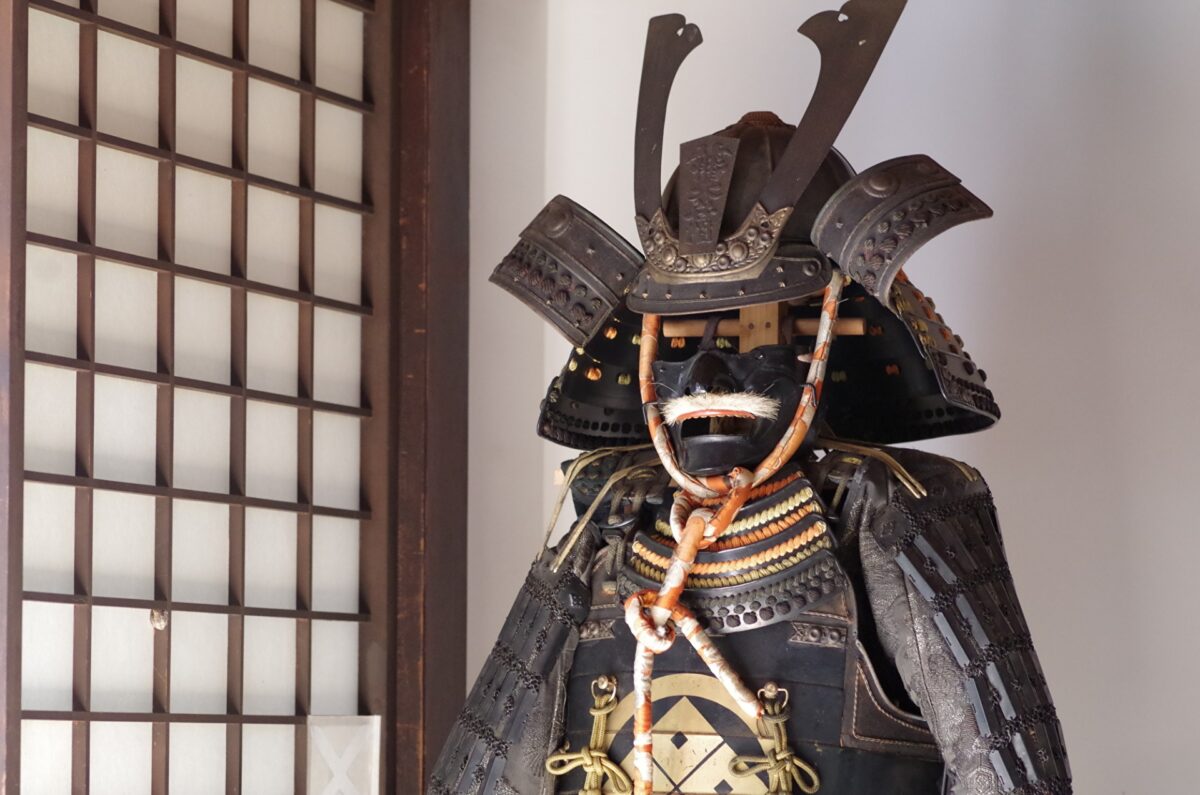
Nobody can deny the want for a samurai experience after spending some time around the historical sites! There are some places that provide samurai experience with Japanese sword practice or just taking some photos in samurai outfits and watching a performance.
You can also learn the basic skills to be a Ninja in Kyoto! Get a full on Ninja experience with a Ninja master while you immerse yourself in the traditional culture that Kyoto has to offer. You will get to dress up like a Ninja, learn all about what it was like back in the day, and even try some Ninja related activities yourself.
26. Pottery Experience
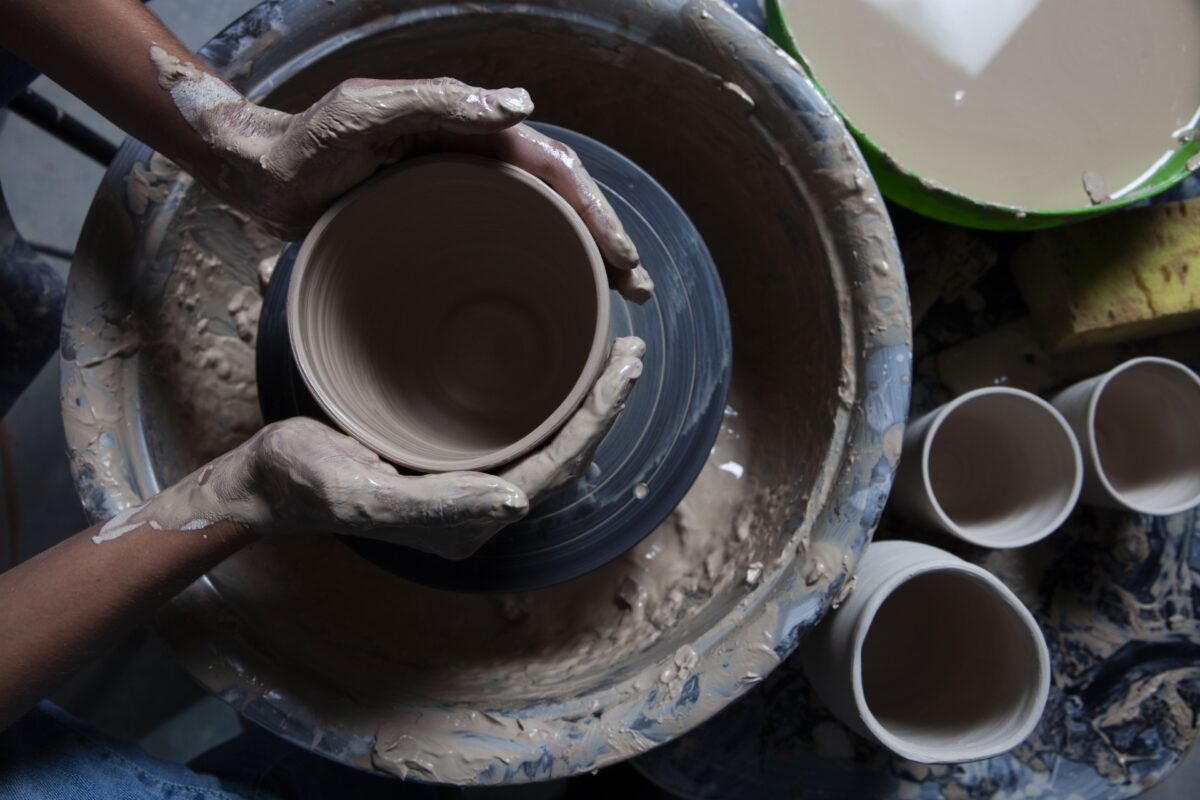
There are a number of different pottery experiences you can have while you’re in Kyoto. Whether you want to make things on the wheel, make pieces by hand, or even just paint already fired pieces, there is something for everyone. Check out this workshop!
Theater
27. Maiko Dance Performances
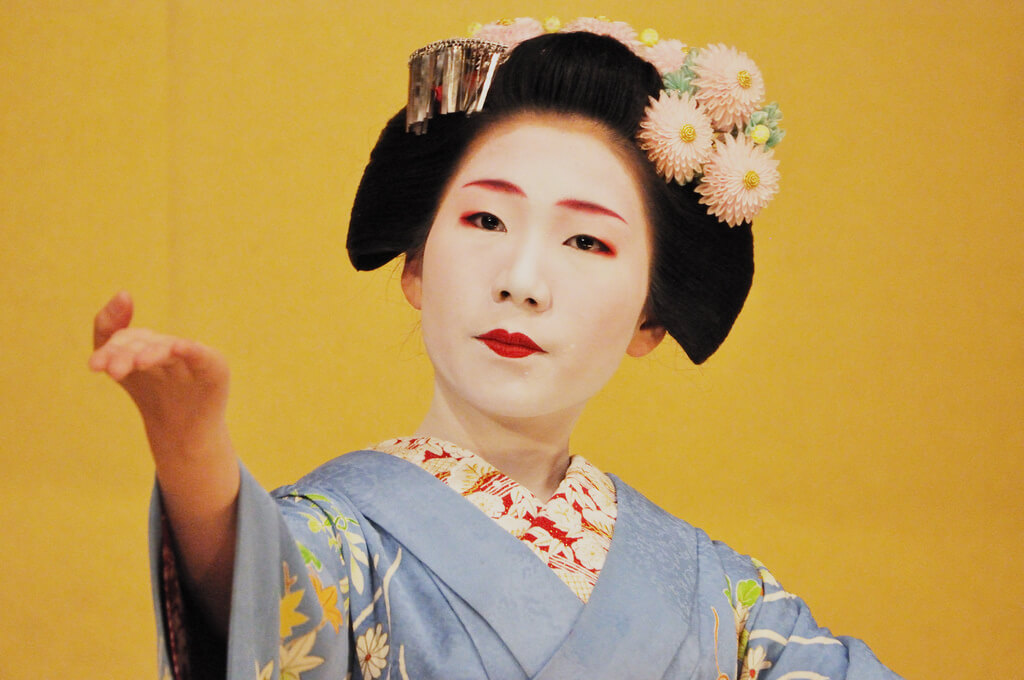
At Gion Corner which is located on Hanamikoji alley in Gion District, you can see seven kinds of traditional Japanese performing arts. And it’s one of the famous places to see a dance performance by Maiko! Usually it’s very difficult for tourists to watch Maiko performances at the Ozashiki since many places are invite-only, so the Gion Corner is the perfect place to enjoy Maiko dance performance for first-timers.
Website: Gion Corner
Admission fee: 5,500-6,600 yen (adults), 3,850 yen (ages 16-22), 3,300 yen (children 7-15), free (preschool children)
Shopping
28. Nishiki Market

If you love food, you HAVE to visit and explore Nishiki Market. There are about 130 stores on this 400 meter long shopping arcade. There is a roof over the market so you can enjoy the lively market even on a rainy day. Business hours of most shops are from 10:00 am to 6:00 pm.
Japan Wonder Travel offers a Nishiki Market Food and Drink Tour, it’s much more fun and informative to walk around the traditional market with a knowledgeable local guide. If you don’t want to miss the cool shops and hidden gems around the area, join our tour!
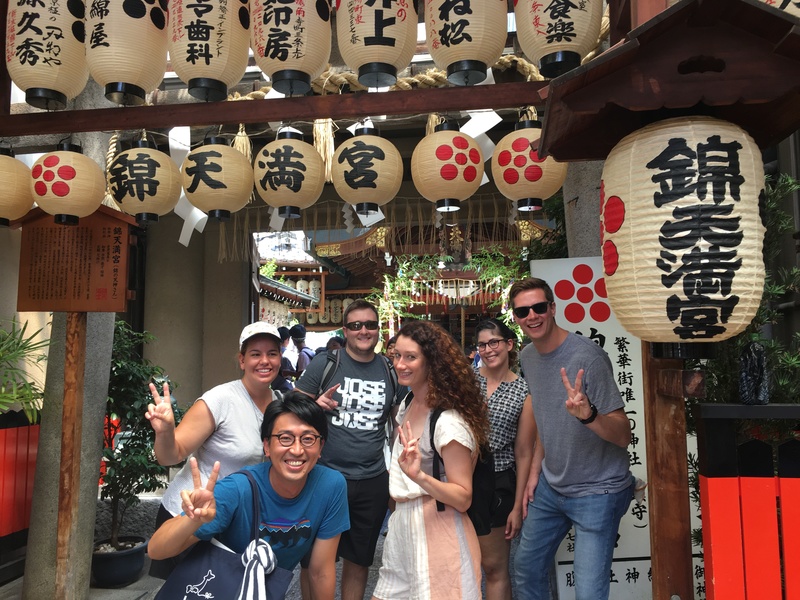
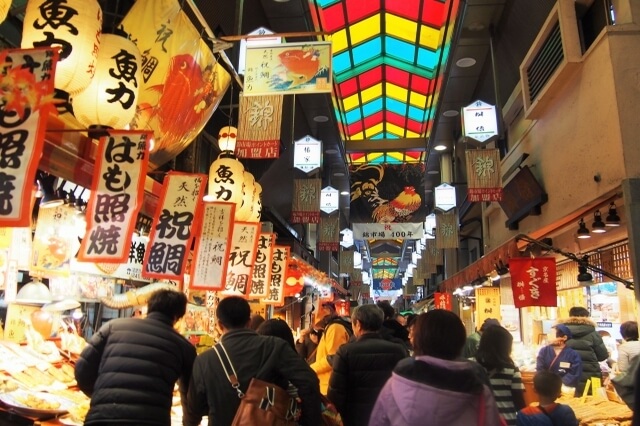
Other Shopping Spots
- Shinkyogoku Shopping Arcade
- Furukawacho Shopping Street
- Kyoto Station Building
Other Spots to Enjoy on A Rainy Day
29. Nidec Kyoto Tower
Kyoto Tower is an iconic tower and the tallest structure in Kyoto which is located near Kyoto Station. It offers a panoramic view over Kyoto City at the observation deck. It’s also a good spot for souvenir shopping because there are a variety of shops, restaurants and bars within the tower and its base. Kyoto Tower even offers unique experiences such as public bathhouses and workshops inside!
Website: Nidec Kyoto Tower
Admission fee: 900 yen (adults), 700 yen (high school students), 600 yen (elementary and junior high school students), 200 yen (children)
Book tickets: Kyoto Tower Observation Deck Admission E-Ticket
30. Kyoto Aquarium
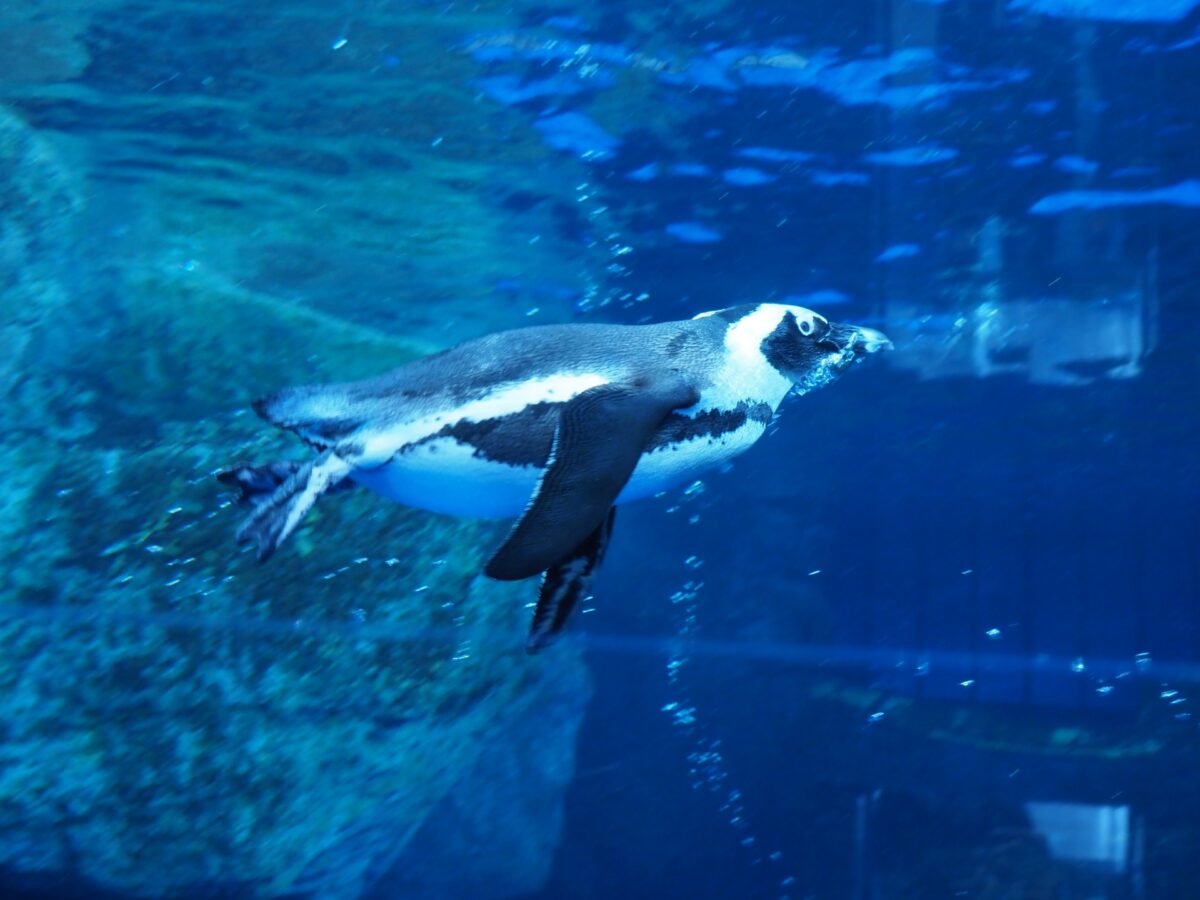
Kyoto Aquarium is a 15 minute walk from Kyoto station and a popular rainy (and every day!) spot. It is a small aquarium but it has high quality facilities and you can take a close look at the aquatic lives. Don’t miss unique dolphins shows and feeding programs which are held a couple of times a day!
Website: Kyoto Aquarium
Admission fee: 2,400 yen (adults), 1,800 yen (high school students), 1,200 yen (elementary and junior high school students), 800 yen (children)
Recommend Rainy Day Activity
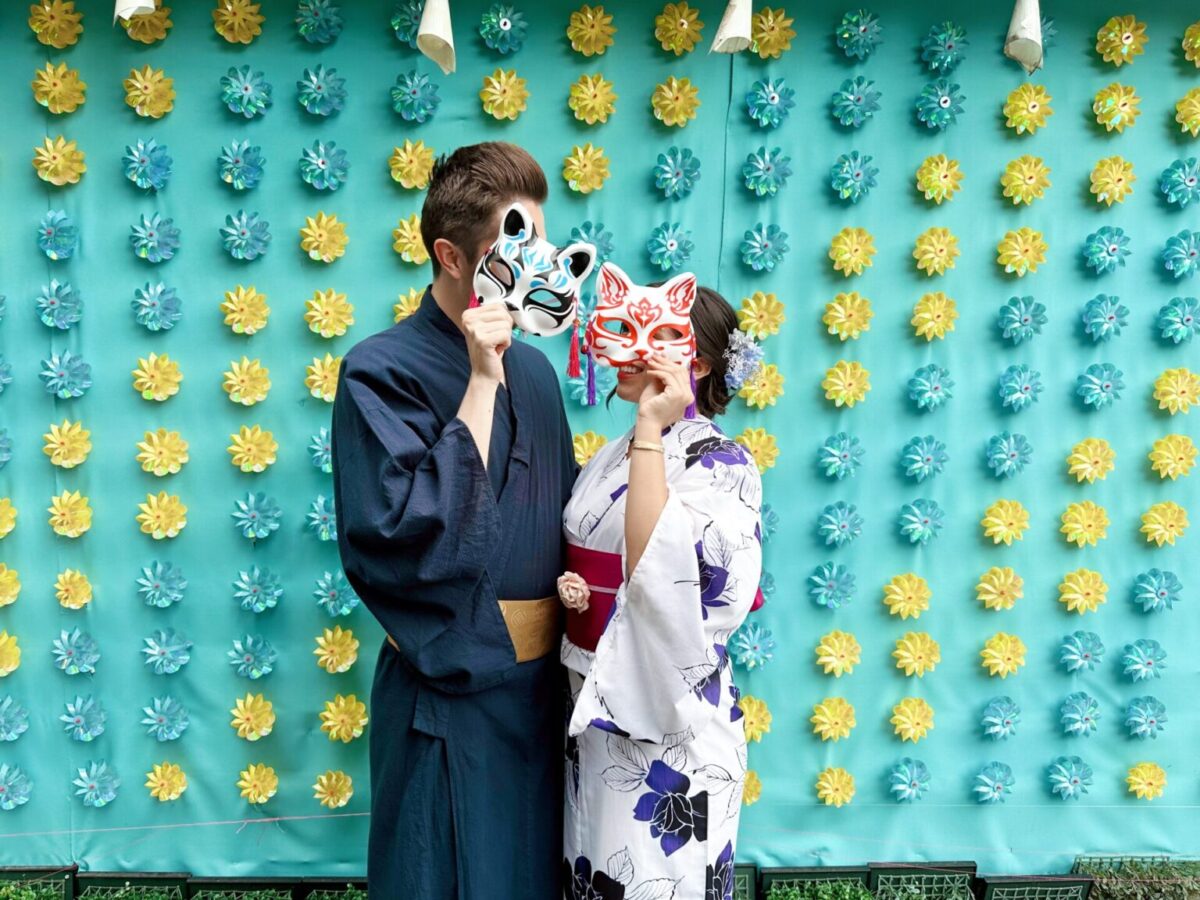
Wargo is a kimono rental brand that offers a wide range of kimono, perfect for exploring these rainy days in Kyoto with style and authenticity. It’s easy to make lasting memories when both you and the city look so photogenic! Enjoy an unforgettable date or make core memories with your family with all types of kimono for the perfect occasion.
Japan Wonder Travel Tours in Kyoto
When you are visiting Kyoto and you need some help organizing your trip, you came to the right place. We’re happy to help you make your trip to Kyoto the best trip ever. We can advise you on where to go or even better, show you around with a local, English speaking guide. Let us help you create safe, comfortable, and unforgettable memories in Kyoto!
▶Kyoto 8h Private Custom Highlight Tour with Licensed Guide
On this full-day private tour of Kyoto, you will be able to see the highlights of Kyoto in just one day and at the same time develop a deeper understanding of both the culture of the area and Japan as a whole.
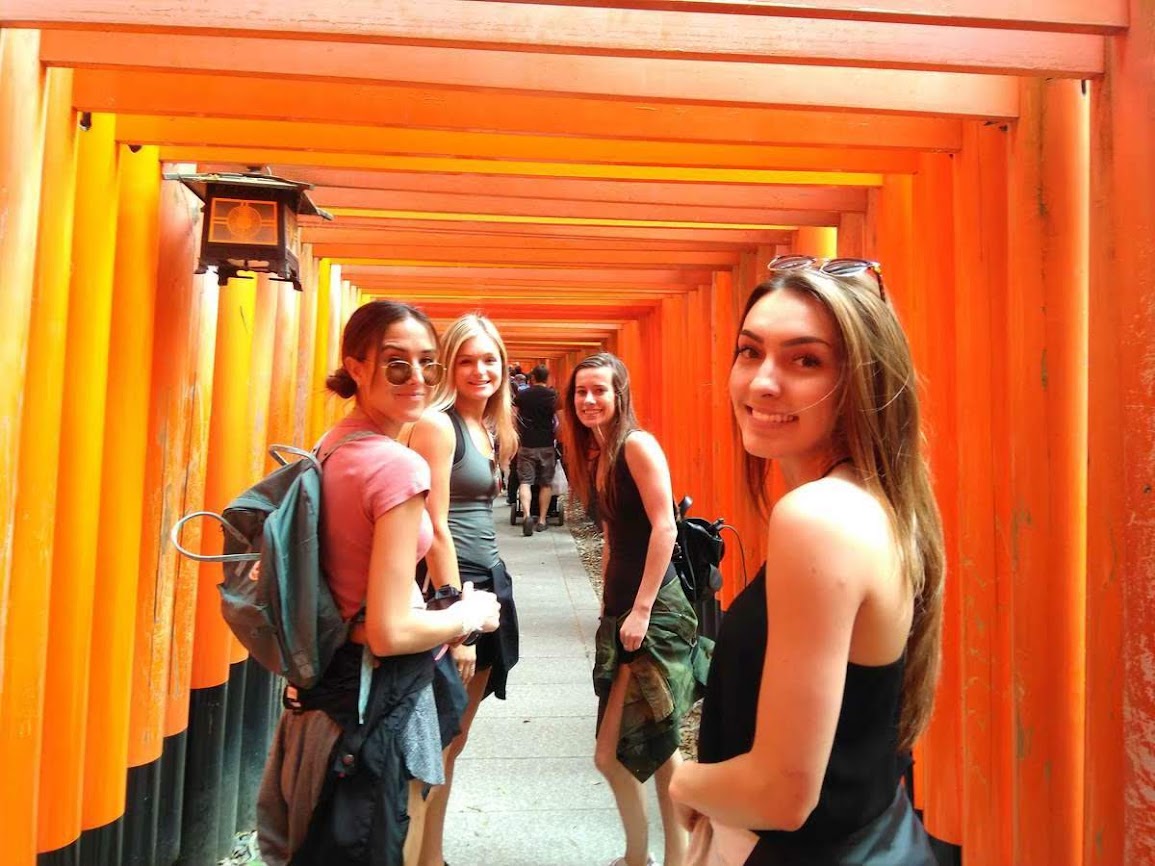
▶Meet a Geisha in Kyoto: Guided Walk in Gion and Enchanted Time with Maiko
Meet a Maiko, a geisha in Kyoto, and enjoy a walking tour in Gion, the geisha district. See an authentic Japanese tradition unfold before your eyes that has existed for hundreds of years. You’ll have chance to take a photo with Geisha!
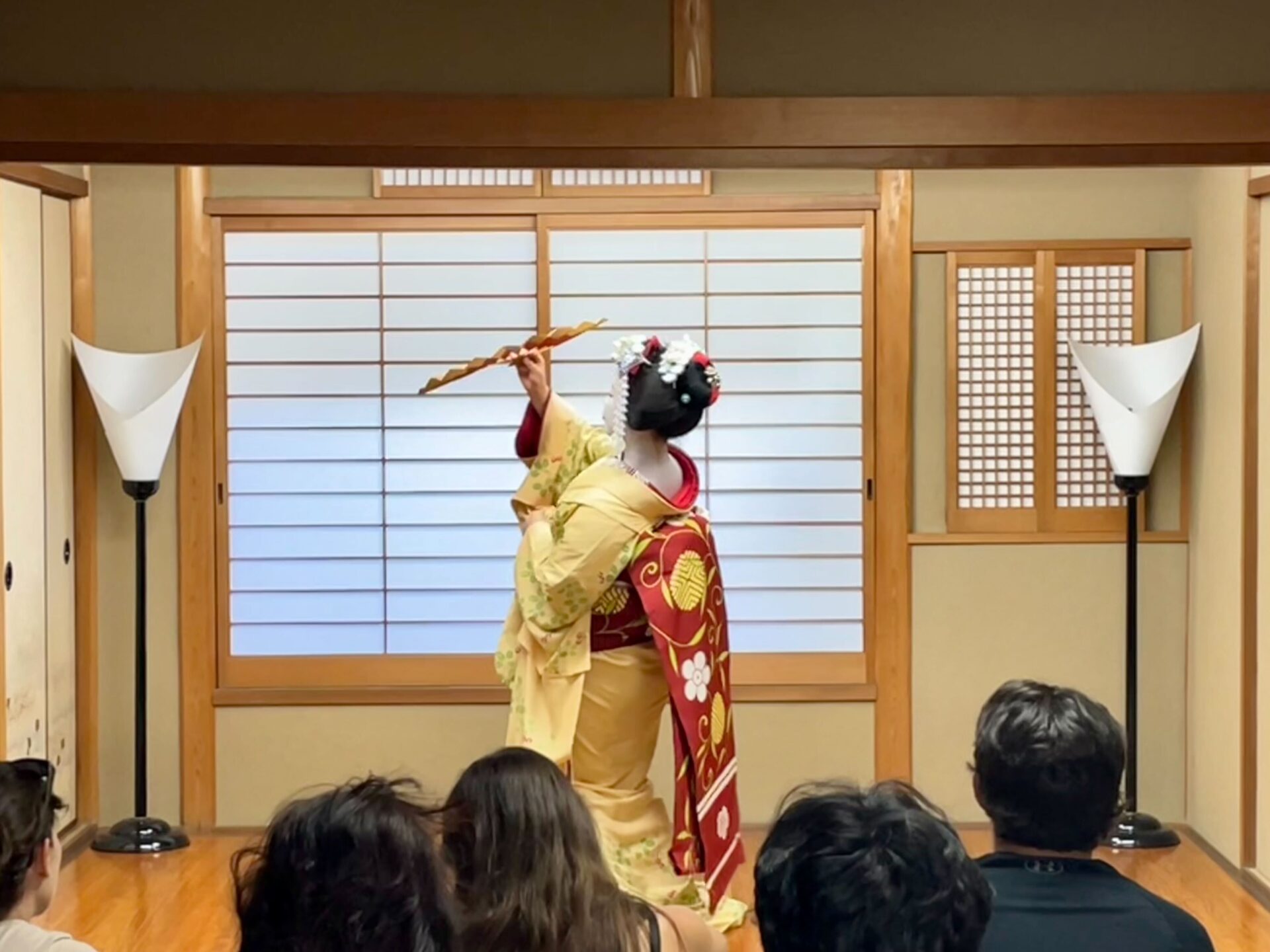
▶Explore Nishiki Market: Food & Culture Walk
If you’re looking to learn more about the culture and the local cuisine of Kyoto, this is the perfect tour for you! Take part in this Kyoto food and drink tour and explore the 400-year-old market and the famous surrounding areas.

▶Kimono Experience
Kyoto is the best city to explore in kimono, Japanese traditional clothing. You can choose the one you like the most from several patterns and colors at the rental shop. In Kyoto, two locations are both accessible from the main tourist attractions which makes it easy to try it on and explore the city for a day!
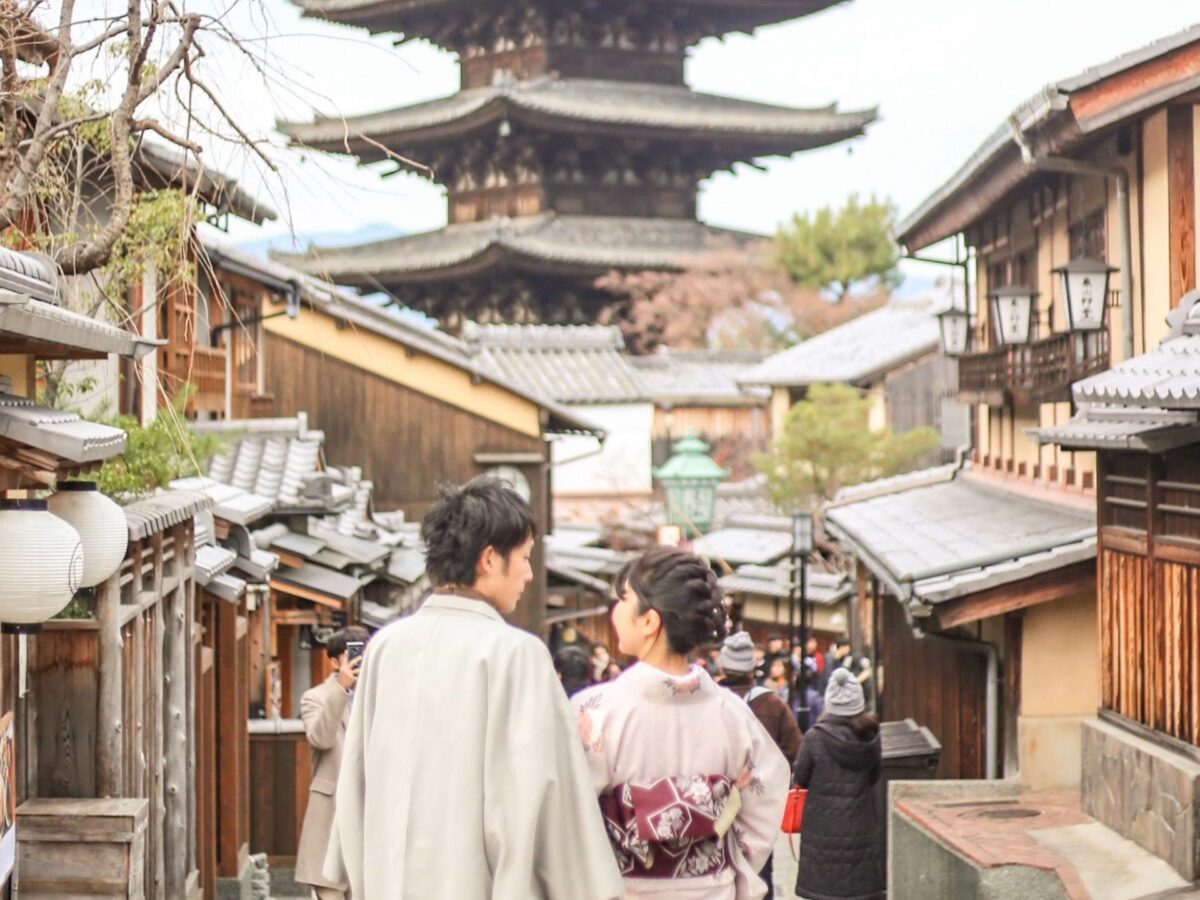
Hope this article helps you to find a way to enjoy a rainy day. Have a wonderful trip in Kyoto and Japan!
Also check out indoor activities for rainy days in Tokyo:
Follow us on Instagram, Facebook and Twitter for more travel inspiration. Or tag us to get featured!
Happy traveling!
Stay informed of the best travel tips to Japan, the most exciting things to do and see, and the top experiences to have with the Japan Wonder Travel Newsletter. Every week we will introduce you to our latest content.
Other articles you might like
